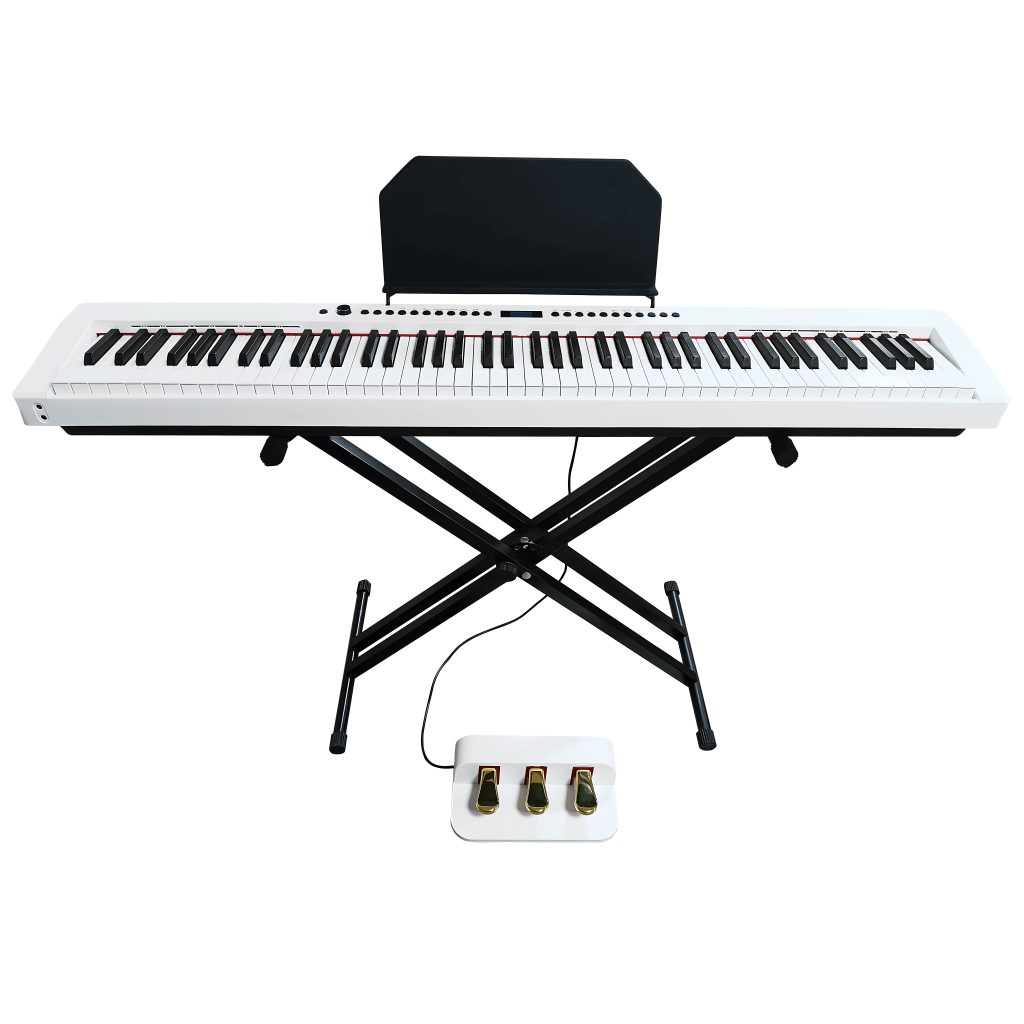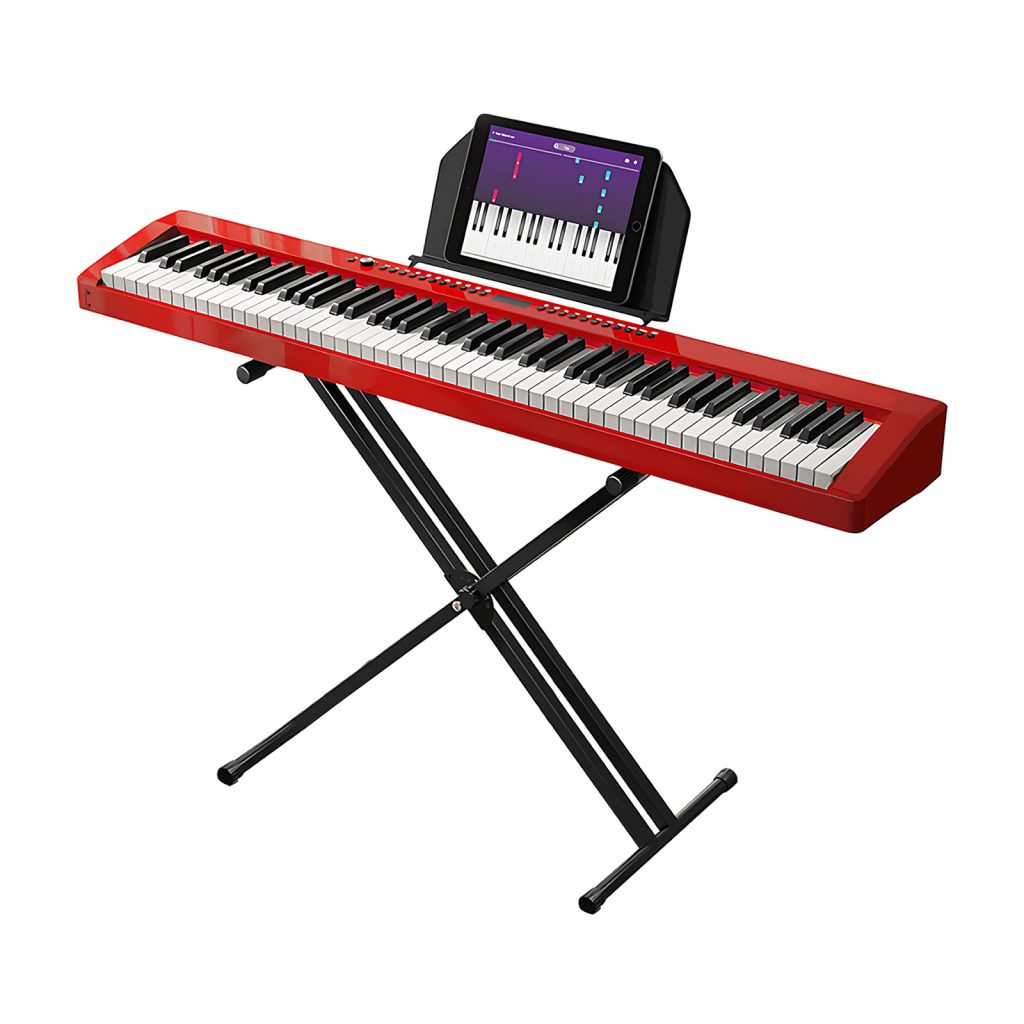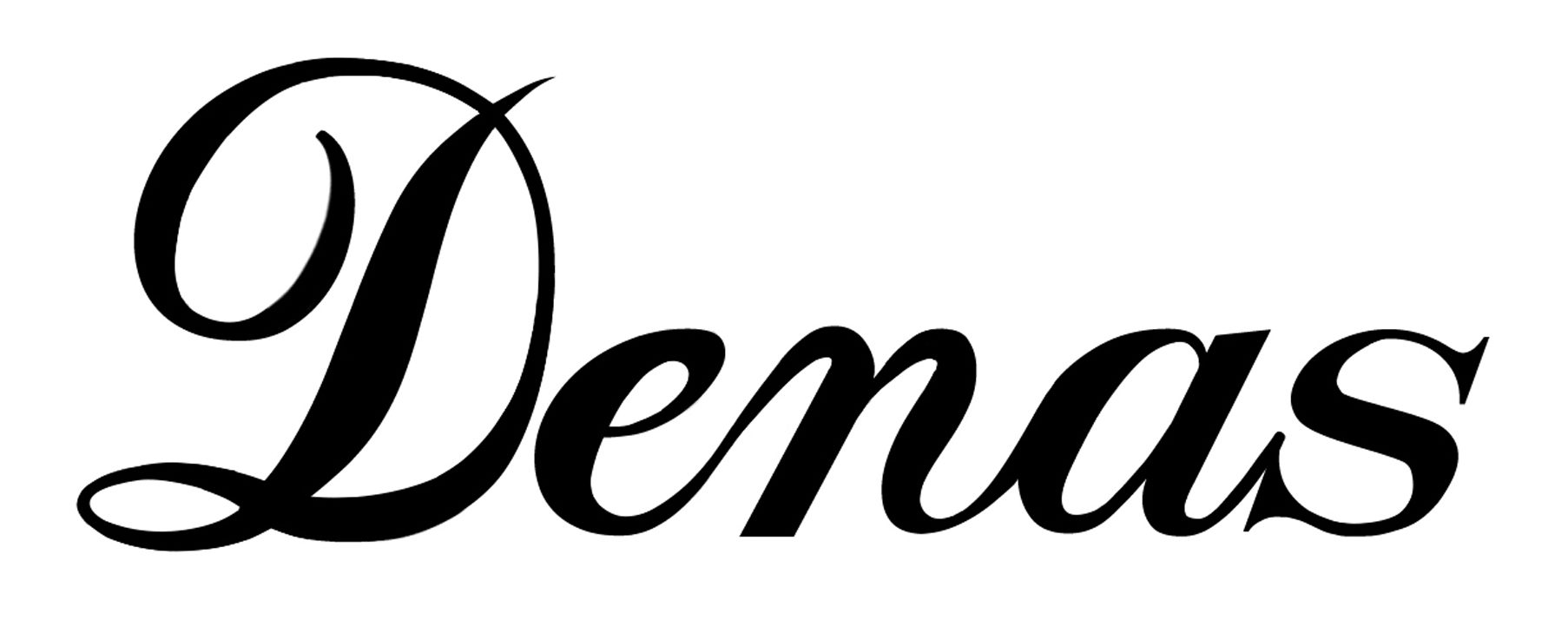Digital pianos have revolutionized the way musicians practice, perform, and compose. Modern models are equipped with a variety of features that not only enhance musical creativity but also aid in learning and technical improvement. This article delves into the diverse functionalities of digital pianos, focusing on built-in metronomes, recording capabilities, teaching modes, sound effects, and accompaniment features.
Built-in Metronome: Essential for Timing and Rhythm
One of the most fundamental yet crucial features of digital pianos is the built-in metronome. This tool is indispensable for developing a strong sense of rhythm, helping musicians maintain a steady tempo while playing.
- Adjustable Tempo Settings: Digital pianos allow players to set the metronome speed, accommodating different pieces and skill levels.
- Customizable Time Signatures: Many models offer the ability to adjust time signatures (e.g., 4/4, 3/4, 6/8), essential for practicing different musical styles.
- Audible and Visual Cues: Some digital pianos provide both sound and LED indicators to aid in timing accuracy.
Recording Function: Capture and Review Your Performance
Another highly beneficial feature is the recording function, which enables musicians to capture their performances for playback and analysis.
- Multi-Track Recording: Advanced models allow users to record multiple tracks separately, helping them layer different instrument sounds or accompaniments.
- MIDI and Audio Recording: Many digital pianos offer MIDI recording for editing within software as well as direct audio recording for immediate playback.
- Playback and Evaluation: The ability to listen to one’s own playing helps in identifying mistakes and improving musical expression.
Teaching Features: Enhancing the Learning Experience
For beginners and self-taught musicians, integrated teaching functions make digital pianos an excellent learning tool.
- Guided Lessons and Exercises: Some models include pre-installed lessons that teach basic music theory, note reading, and hand positioning.
- Lighted Keys: Certain digital pianos feature light-up keys that guide beginners in playing songs correctly.
- Dual Mode and Split Keyboard: Teachers and students can play together, with the keyboard splitting into two identical pitch ranges.
- Connectivity with Learning Apps: Many digital pianos can be linked to educational apps like Simply Piano, Flowkey, and Yousician, expanding the learning experience.
Multiple Sound Effects: Expanding Musical Creativity
Beyond the standard piano sound, modern digital pianos come with multiple sound effects and instrument voices.
- Variety of Instrument Tones: From grand pianos and electric pianos to organs, strings, and synthesizers, the vast selection enhances versatility.
- Reverb, Chorus, and Delay Effects: These built-in sound effects allow musicians to experiment with different acoustic environments and styles.
- Layering and Splitting: Musicians can layer two sounds together (e.g., piano and strings) or split the keyboard to assign different sounds to each hand.
Accompaniment Modes: Simulating a Full Band Experience
For solo performers, accompaniment features create a richer and more dynamic sound.
- Auto-Accompaniment Styles: Many digital pianos offer a variety of rhythm styles, including jazz, rock, pop, and classical, allowing users to play along with a virtual band.
- Chord Recognition: By playing simple chord progressions with the left hand, the digital piano generates full instrumental backing tracks.
- Interactive Arranger Functions: Some models let musicians customize accompaniment patterns and even create their own backing tracks.
Connectivity and Integration with Other Devices
Modern digital pianos offer extensive connectivity options, making them more versatile in professional and educational settings.
- USB and MIDI Connectivity: Connect to a computer for music production, notation software, or virtual instrument libraries.
- Bluetooth Integration: Some digital pianos support Bluetooth for wireless MIDI transmission or audio streaming.
- Headphone Jack: Perfect for silent practice, enabling musicians to play without disturbing others.
The versatility of digital pianos makes them an ideal choice for musicians of all levels. Whether you are a beginner looking for teaching tools, a composer needing recording capabilities, or a performer seeking rich sound effects and accompaniment, digital pianos offer a range of features that cater to every musical need. Investing in a feature-packed digital piano enhances not only performance but also creativity and learning efficiency.




